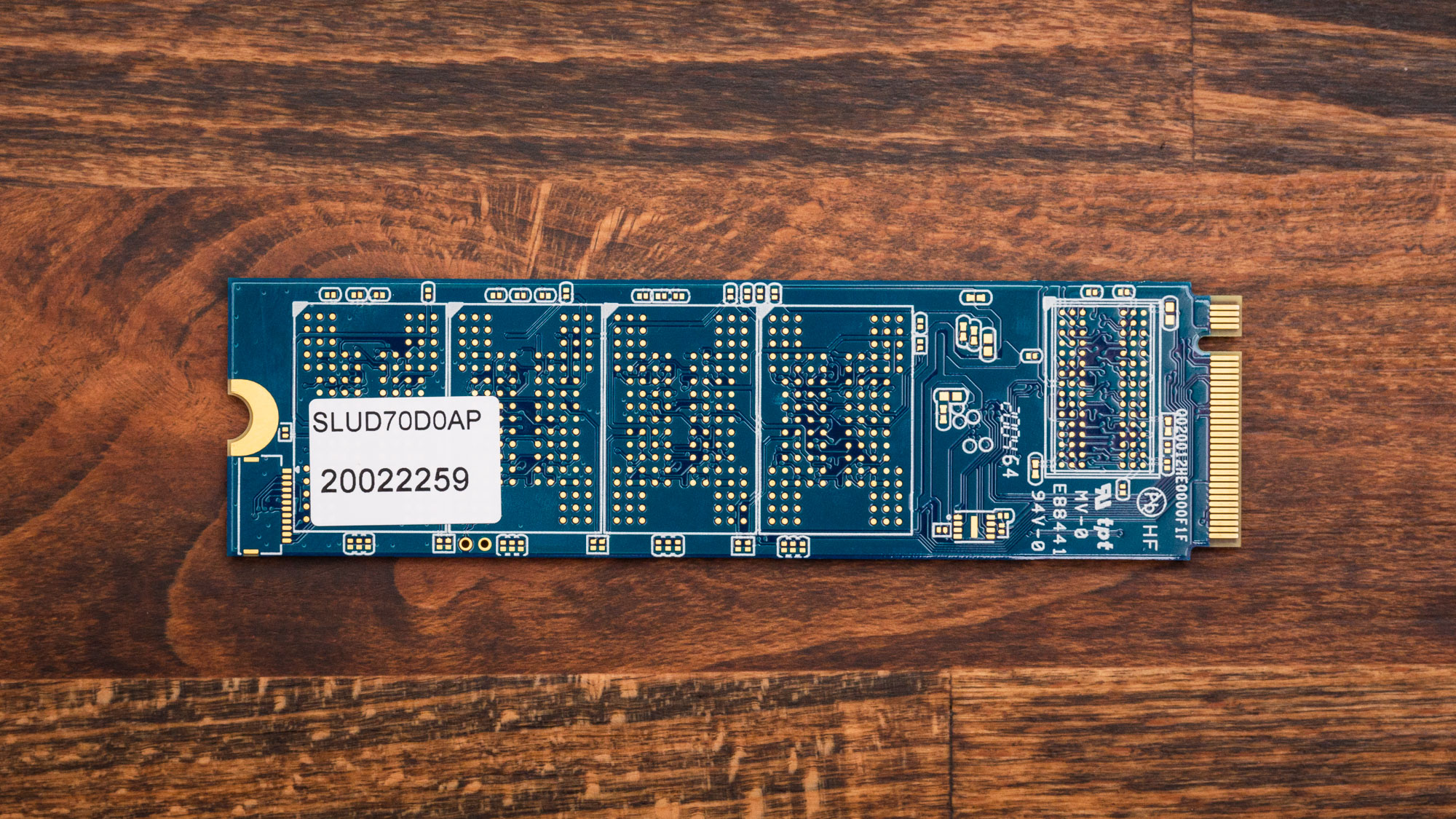Tom's Hardware Verdict
While not the best looking M.2 NVMe SSD we’ve come across, Silicon Power’s UD70 is a responsive PCIe 3.0 SSD with an attractive price point.
Pros
- +
Competitive performance
- +
Single-sided form factor
- +
AES 256-bit hardware encryption
- +
5-year warranty
Cons
- -
Low endurance ratings
- -
Slow write speed after write cache fills
Why you can trust Tom's Hardware
Silicon Power’s UD70 oozes value and is a perfect option for tight-budgeted gamers and ordinary everyday office users. The UD70 comes with a potent combination of Phison’s E12S PCIe 3.0 NVMe SSD controller and Micron’s latest QLC flash, making it quite similar to the Sabrent Rocket Q we reviewed last year.
The UD70 delivers solid performance for a PCIe 3.0 SSD, has an inexpensive price tag, and comes with hardware encryption support. But due to its rather weak sustained write performance, it’s not too appealing to the prosumer crowd.
Specifications
| Product | UD70 500GB | UD70 1TB | UD70 2TB |
|---|---|---|---|
| Pricing | $76.50 | $109.99 | $195.99 |
| Capacity (User / Raw) | 500GB / 512GB | 1000GB / 1024GB | 2000GB / 2048GB |
| Form Factor | M.2 2280 | M.2 2280 | M.2 2280 |
| Interface / Protocol | PCIe 3.0 x4 / NVMe 1.3 | PCIe 3.0 x4 / NVMe 1.3 | PCIe 3.0 x4 / NVMe 1.3 |
| Controller | Phison PS5012-E12S | Phison E12S | Phison E12S |
| DRAM | DDR3L | DDR3L | DDR3L |
| Memory | Micron 96L QLC | Micron 96L QLC | Micron 96L QLC |
| Sequential Read | 3,400 MBps | 3,400 MBps | 3,400 MBps |
| Sequential Write | 1,000 MBps | 1,900 MBps | 3,000 MBps |
| Read | 95,000 IOPS | 120,000 IOPS | 250,000 IOPS |
| Write | 250,000 IOPS | 500,000 IOPS | 650,000 IOPS |
| Security | AES 256-bit encryption | AES 256-bit encryption | AES 256-bit encryption |
| Endurance (TBW) | 120 TB | 260 TB | 530 TB |
| Part Number | SP500GBP34UD7005 | SP01KGBP34UD7005 | SP02KGBP34UD7005 |
| Warranty | 5-Years | 5-Years | 5-Years |
Silicon Power’s UD70 comes in capacities of 500GB, 1TB, and 2TB and is priced as low as $0.10 per GB. The 2TB model is rated for peak speeds of up to 3.4/3 GBps of sequential read/write throughput, while the 500GB and 1TB models write a little slower at up to 1.0 GBps and 1.9 GBps, respectively. The entire series is rated for up to 250,000/650,000 random read/write IOPS.
These peak performance ratings are measured within the SLC cache, though. The UD70 features a large dynamic SLC cache that spans one-quarter of its capacity, but the cache will shrink as you fill the drive, or grow as you free up space. As such, because the SSD comes armed with QLC flash, that sustained performance won’t last long after you begin filling the SSD with data.
The UD70 comes backed by a five-year warranty and supports standard data integrity mechanisms like end-to-end data protection, LDPC ECC, and RAID-like parity protection. These mechanisms help enable reasonable endurance ratings for a low-end device with QLC flash — our 2TB sample can absorb up to 530TB of writes within its warranty period. The drive also comes with optional support for hardware-accelerated AES 256-bit encryption, enabling responsive and secure data storage.
Software and Accessories
Silicon Power also includes access to the company’s SSD toolbox. While not as robust or polished as some of the bigger brands, SP Toolbox enables end-users to monitor the SSD’s SMART data and run diagnostic tests.
A Closer Look



Silicon Power’s UD70 comes in a compact single-sided M.2 2280 form factor at all capacities, enabling broad compatibility. Like the US70, the UD70 isn’t the best-looking M.2 SSD we’ve come across. The blue PCB and red-themed sticker clash, and the compliance marks and barcodes detract from the aesthetic even more.
Get Tom's Hardware's best news and in-depth reviews, straight to your inbox.
At the heart of the UD70 is a Phison PS5012-E12S PCIe 3.0 x4 8-channel NVMe 1.3 complaint SSD controller. The E12S utilizes dual Arm Cortex R5 CPUs clocked in at 666 MHz and leverages CoXProcessor 2.0 technology (dual coprocessors) to help maintain a consistent latency profile during write workloads.
The controller is built on a 12nm node and uses a smaller physical design than its predecessor, the original E12, downsizing from a 16x16 mm to a 12x12mm package, but retaining the same performance. This enables more flexible NAND placement to allow for up to four NAND emplacements on a single side of the PCB, while the original could only handle up to two.
The controller leverages active state power management (ASPM) and autonomous power state transition (ASPT). The company dubs these features a ‘dual self-cooling system,’ but this tech is found in most of the other NVMe SSDs on the market.


The controller caches its FTL metadata with a single 4Gb Kingston DDR3L DRAM chip on our 2TB review sample. The controller interfaces with sixteen dies of Micron’s 1Tb N28A 96-layer QLC flash that operate at 666 MTps. Each die is split into four virtual planes, as Micron’s design leverages a tile-based architecture for both performance and reliability. Micron claims the floating gate architecture provides better data retention than most charge trap flash designs.
MORE: Best SSDs
MORE: How We Test HDDs And SSDs
MORE: All SSD Content

Sean is a Contributing Editor at Tom’s Hardware US, covering storage hardware.
-
seanwebster Reply
Don't we all. hehekorekan said:I thought by low cost 1TB would be $50 and 2TB at $100 -
cgilley Even so, that's pretty wowing good for 2TB of storage. I have to laugh though. "Not the best looking" - really? As long as it is compact and fits, it can have buck teeth for all I care.Reply
